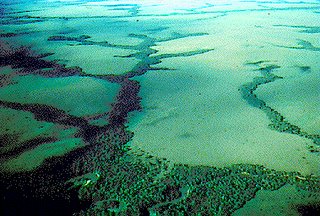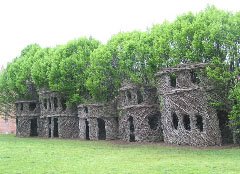
This is an interesting
place. An engineer dedicated his life to making a barren, unlivable environment into an oasis, both literally and figuratively. Wind and sun was used to provide energy to a village in the Colombian
llanos and then they brought in Caribbean pinetrees which made the soil attractive to rain forest plants turning the area back into the rain forest it was thousands of years ago.
The most significant invention is a simple hand pump capable of tapping aquifers six times deeper than conventional models, but requiring so little effort that children can operate it. In normal pumps a heavy piston must be raised and lowered inside a pipe. Gaviotas engineers realized they could do the reverse; leave the piston stationary and lift an outer sleeve of lightweight, inexpensive PVC tubing instead.
The word
llanos translates to plains, but the Colombian
llanos are nothing like the fertile plains of the U.S. Midwest. Roads are barely there in the dry season and completely impassable in the rainy season. And in Colombia anytime you travel outside the cities and larger towns, you also travel back one or two centuries in time.
Las Gaviotas just leaped over the petroleum fueled era.
For 6 months I lived in Villavicencio, which is where the
llanos begin. It was 1975, but I knew nothing about Las Gaviotas, which was started in 1971. We lived in the second floor of a house. It had a nice, big patio where I washed clothes in the
lavadero (a concrete water container with a washboard).
The strangest part of the house was the decorative brick walls. It had holes so that a breeze could come through, but also the mosquitoes could come in. We had netting for the baby's bed, but not for ours. We sprayed insecticide every night around the bedroom, a very common practice in tropical areas. Nothing worse than hearing the whine of a mosquito when you are trying to sleep. There was no hot water, the norm for tropical areas, in Colombia at least. The water came off the mountain, so it was very cold. I could not take such cold showers, and there was no tub, so it was sponge baths for me and the baby. Solar water heating would have been so simple to install. I wonder if people are using solar now.
















